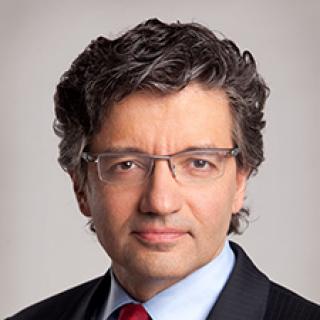Hospitals and large health systems that own physician practices play a growing role across the medical landscape, but independent practices remain an important part of family medicine, according to a study published in the Journal of the American Board of Family Medicine.
For the study, researchers used data from the 2017 to 2019 American Board of Family Medicine Family Medicine Certification Examination Registration Questionnaire and included only family physicians who provided continuity care. They excluded physicians who performed primarily emergency or other hospital-based care.
“Independent physician-owned family practices remain a significant part of the U.S. primary care delivery system landscape,” the study’s authors concluded.
The proportion of family physicians in independent practice varies greatly with size, the study says. More than 80% of solo practices are privately owned, while 35% of two-to-five clinician practices are independent. Overall, researchers found that 32% of family doctors work in private physician practices.
Most U.S. physicians providing patient care are working outside of doctor-owned medical practices, according to data the AMA collected from 3,500 physicians in the 2020 Physician Practice Benchmark Survey conducted last fall.
Learn more with the AMA about how the shifts away from smaller and private practices are picking up speed.
Care is equal or better
The study’s authors cited evidence that independent practices deliver care that is equal to, or better than, that of practices owned by hospitals and health systems. However, these independent practices face substantial administrative burdens and lack access to the resources that larger health systems may provide. Meanwhile, the authors noted, long-standing physician payment policies put independent primary care practices at a disadvantage, contributing to closures and buyouts.
The COVID-19 pandemic’s financial strain has not made the situation any easier for private physician practices.
However, one physician with a successful small private physician practice says there are many advantages to not being part of a hospital system.
That physician, M. Zuhdi Jasser, MD, is head of Jasser Comprehensive Care in Phoenix, a private practice with two physicians and a physician assistant. He also chairs the AMA Private Practice Physicians Section Governing Council.
“It’s easy to see the glass as half empty,” he said, referring to the statistics that show a decline in doctor-owned practices, but he noted that private practice continues to provide physicians opportunities to provide superior care.
Dr. Jasser, an internist, said that private practice allows primary care physicians to maintain an independent approach while keeping inviolate and confidential the doctor-patient relationship.
Independence also allows for creativity in delivery of medical services and a level of entrepreneurship within communities, he added.
Personal approach to care
“The bottom line is that my independent practice is intertwined with my desire to practice medicine and my personality,” he said. “When my patients come to see me or my partners, I know that they are truly choosing to see me, not just seeking anonymous service at a hospital or outpatient clinic.”
Independence also allows physicians to build relationships in the community, he added, which helps physicians determine the need for special programs and services. “I don’t want to lose that connection to the community,” he said.
Dr. Jasser recommended that young physicians seek out residency training opportunities with private physician practices to better understand the unique qualities of that style of practice.
“The statistics that I have seen indicate that only about 8% are thinking about private practice at that stage of their education,” he said. “I guarantee” that if they get exposure “to private practice, they will recognize a very positive difference.”
Many young physicians are concerned about finances and managing the administration of a private practice. But, he advised, “if you are busy” seeing and delivering high-quality, personal care to patients, “the economics will work themselves out.”
It takes astute clinical judgement, effective collaboration with colleagues, and innovative problem-solving to succeed in an independent setting that is often fluid, and the AMA offers the resources and support physicians need to both start and sustain success in private practice.
Find out more about the AMA Private Practice Physicians Section, which seeks to preserve the freedom, independence and integrity of private practice.




